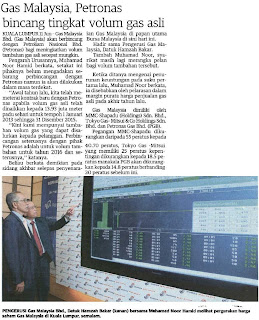Sistem Aplikasi Atas Talian (OAS)
merupakan portal yang menyediakan kemudahan kepada syarikat dan
individu untuk memohon lesen dan perakuan melalui borang atas talian
bagi jenis permohonan berikut:
- Lesen Awam
- Lesen Persendirian (Bagi Kapasiti Pepasangan 5MW ke atas)
- Lesen Provisional
- Lesen Penggunaan Gas
- Lesen Gas Persendirian
- Perakuan Kompetenan dan Pendaftaran Orang Kompeten Gas
- Pendaftaran Kontraktor Gas
- Kelulusan Peralatan Gas
- Kelulusan Pengilang dan Pengimport Peralatan Gas
- Kelulusan Untuk Memasang Sistem Talian Paip Gas
- Kelulusan Untuk Mengendali Sistem Talian Paip Gas
Pihak syarikat dan individu perlu mendaftar sebagai pengguna sistem
sebelum mengisi borang permohonan dan menghantarnya secara atas talian.
Permohonan secara atas talian hanya sempurna apabila borang yang
ditandatangan (hardcopy) dan lampiran lengkap (softcopy/hardcopy)
diterima oleh pihak Suruhanjaya Tenaga untuk diproses.
Melalui OAS, pihak syarikat dan individu dapat menyemak perkembangan permohonan sama ada lulus atau sebaliknya. Disamping itu juga, OAS menyediakan kemudahan komunikasi atas talian bagi membantu pemohon untuk membuat sebarang pertanyaan dan keraguan pada permohonan yang memerlukan justifikasi terperinci.
OAS memudahkan pembekal data daripada pemegang Lesen Penggunaan Gas, pemegang Lesen Awam dan Lesen Persendirian Lebih 5MW menghantar laporan bulanan dan suku tahunan secara atas talian kepada Suruhanjaya Tenaga. Dengan OAS pembekal data akan menerima mesej peringatan untuk penghantaran laporan. Disamping itu juga, pihak pembekal data dapat menyemak laporan berkaitan untuk semakan dan pengesahan.
Melalui OAS, pihak syarikat dan individu dapat menyemak perkembangan permohonan sama ada lulus atau sebaliknya. Disamping itu juga, OAS menyediakan kemudahan komunikasi atas talian bagi membantu pemohon untuk membuat sebarang pertanyaan dan keraguan pada permohonan yang memerlukan justifikasi terperinci.
OAS memudahkan pembekal data daripada pemegang Lesen Penggunaan Gas, pemegang Lesen Awam dan Lesen Persendirian Lebih 5MW menghantar laporan bulanan dan suku tahunan secara atas talian kepada Suruhanjaya Tenaga. Dengan OAS pembekal data akan menerima mesej peringatan untuk penghantaran laporan. Disamping itu juga, pihak pembekal data dapat menyemak laporan berkaitan untuk semakan dan pengesahan.





